Breaking Barriers to Regenerative Agriculture
It’s not easy to step out of tradition or begin a new venture. For these farmers and ranchers, improving the long-term health of the land and their finances were worth the challenges.
Talk to a rancher who has been practicing regenerative agriculture for the past 20 years, and you’re likely to hear about the resounding benefits.
Increasing soil organic matter — the foundation of soil fertility — improves the land’s natural ability to produce food and fiber and to provide important services to society, like air and water filtration.
Better functioning, well-managed land grows more forage for cattle and other grazing animals. It stays resilient during times of drought and heavy rains due to the soil soaking in and holding more water. It doesn’t typically need costly inputs to control brush and other pests or to boost fertility. And the combination of cutting expenses, financial planning and, in many cases, new marketing opportunities, adds profitability and overall stability to the operation.
Talk a little more with that same producer, and they will reveal the journey requires grit, education and adaptation.
Barriers to Regenerative Agriculture
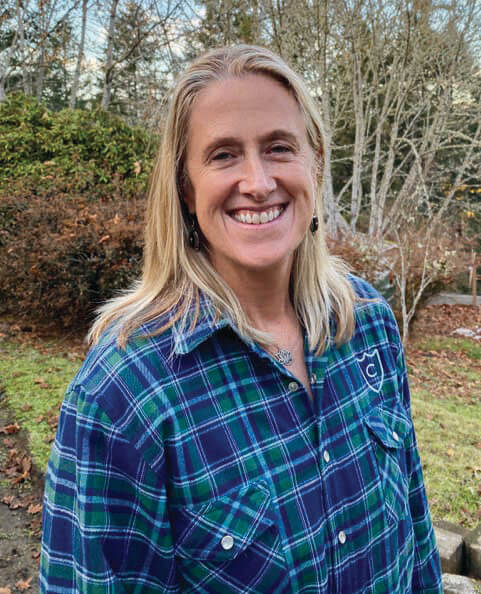
“… These climate-resilient practices … gave them more forage, cost them less, and created less stress for them and their livestock.”
Hannah Gosnell, Ph.D.
Hannah Gosnell, Ph.D., has talked to hundreds of farmers and ranchers who use grazing to reverse degradation on both public and private lands in the U.S. as well as in Australia. It’s a cause she believes is becoming increasingly relevant, considering as much as 70% of U.S. grazing lands are considered degraded and scientists are realizing agriculture can be a natural climate solution.
In the mid-2000s, Gosnell, now a professor of geography at Oregon State University, set out to learn more about how cattle producers can play a role in climate change mitigation. She interviewed nearly 30 of the approximately 1,000 ranchers who signed up to participate in a voluntary carbon market that paid land managers for sequestering carbon after going through a verification process. The program was in place from 2008 to 2010.
It quickly became apparent to Gosnell that those who participated were already managing in a way that fit the program’s requirements.
“They weren’t doing it just to make money from the program,” Gosnell says. “They did it because it made sense for them. They were already engaged in these climate-resilient practices that gave them more forage, cost them less, and created less stress for them and their livestock. The payment was just icing on the cake.”
So if regenerative agriculture has so many positive outcomes, why is it not more widely adopted?
The short answer: Historical factors have shaped the current conventions of agriculture, and the reality is it’s not easy to step away from them.
Gosnell’s research turned to focus on what she calls the “transformation journey.”
“I would ask people, ‘How did you decide to go from conventional to regenerative and what was the journey like?’” she says.
What she found was that there are practical, political and personal challenges involved in the transition.
From a practical point of view, it takes time and resources to learn new management techniques as well as how and when to apply them based on the ecosystem processes taking place on their land. These processes (the water, energy and nutrient cycles in addition to community dynamics) manifest and react differently to different practices depending on where you live and what the weather is doing. Managers invest in additional education and, often, infrastructure, and they must learn to see the land differently.
Regenerative producers must also spend the necessary time planning, monitoring and adjusting plans accordingly.
As with any enterprise, there is always a level of economic uncertainty.
According to Gosnell, the most difficult challenge, and most interesting, falls into what she calls the personal, or social, sphere. If a person has been ranching a certain way their whole life, and everyone in their community does it that way, and their dad and granddad did it that way, it takes tremendous courage to shift one’s mindset and chart a new path.
The following producers undertook the transformative journey of regenerative agriculture and overcame the barriers to adoption. For some, the journey began with crisis. For others, it started with the desire to look at agriculture through an entirely new lens.
Tony Malmberg
LOCATION: Blue Mountains of northeastern Oregon
CURRENT OPERATIONS: Raises beef cattle on native range and introduced pasture managed for biodiversity
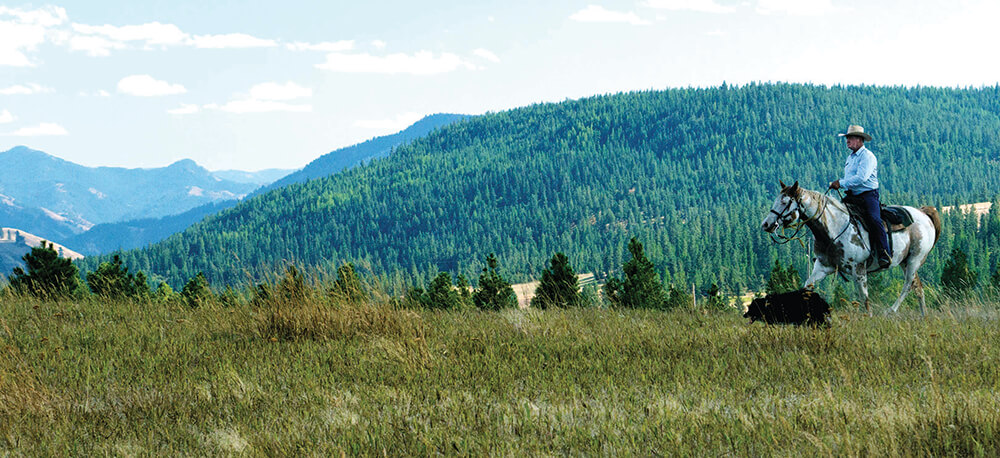
Tony Malmberg grew up on ranches in the Nebraska Sandhills under the tutelage of his father, uncle and grandfather, a Swedish immigrant whose third language was English. Sioux was his second, picked up during his younger years with the Native American cowboys on the Matador Ranch in western South Dakota.
Grit and determination were woven into the fiber of everything Malmberg was taught as a cowboy, he says, but hard work alone was not enough to save his ranch.
He and his family had bought and moved to a property in Lander, Wyoming, in the fall of 1978. Within the first few years, his dad died. His uncle left, he and his wife divorced, and he was faced with bankruptcy.
For years, Malmberg blamed the weather, markets and regulations for his troubles. Then, slowly, he began to recognize the way he was ranching simply wasn’t working anymore.
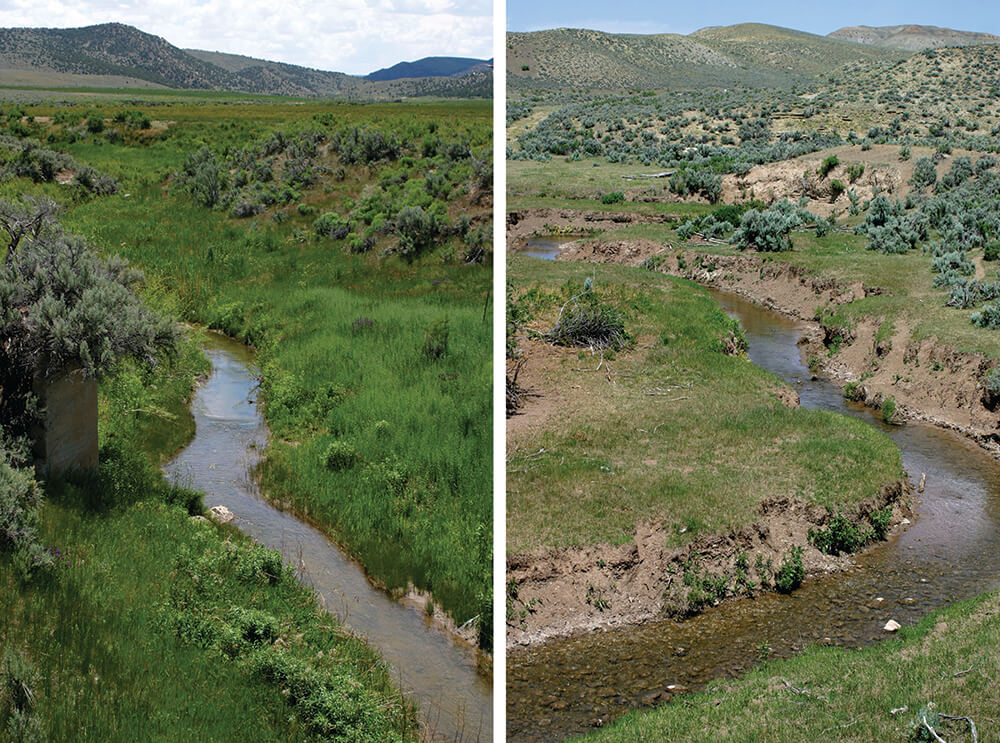
In the early 1980s, he began to hear rumblings of a Zimbabwean ecologist, Allan Savory, who had come to the U.S. a few years before. Savory claimed his method of ranching could double a ranch’s stocking rate. It was a controversial assertion but one Malmberg, who wanted to increase production, found attractive.
In 1987, Malmberg decided to take one of Savory’s classes on holistic management. He remembers taking away three things: knowledge of a gross profit analysis and of overgrazing and, perhaps most significantly, “that there was such a thing as having a quality of life.”
Malmberg learned that grasslands like the ones he managed evolved under large herds of grazing animals that stayed together to protect themselves from packs of predators. If he wanted those grasslands to perform, he needed to mimic nature and manage them in the way they evolved — with intense periods of grazing followed by long periods of rest. Proper grazing creates a positive disturbance on the landscape, and manure leaves behind slow-releasing nutrients that feed microbes in the soil. However, the proper balance is essential. A plant needs to recover before it’s grazed again, otherwise it slowly weakens and dies.
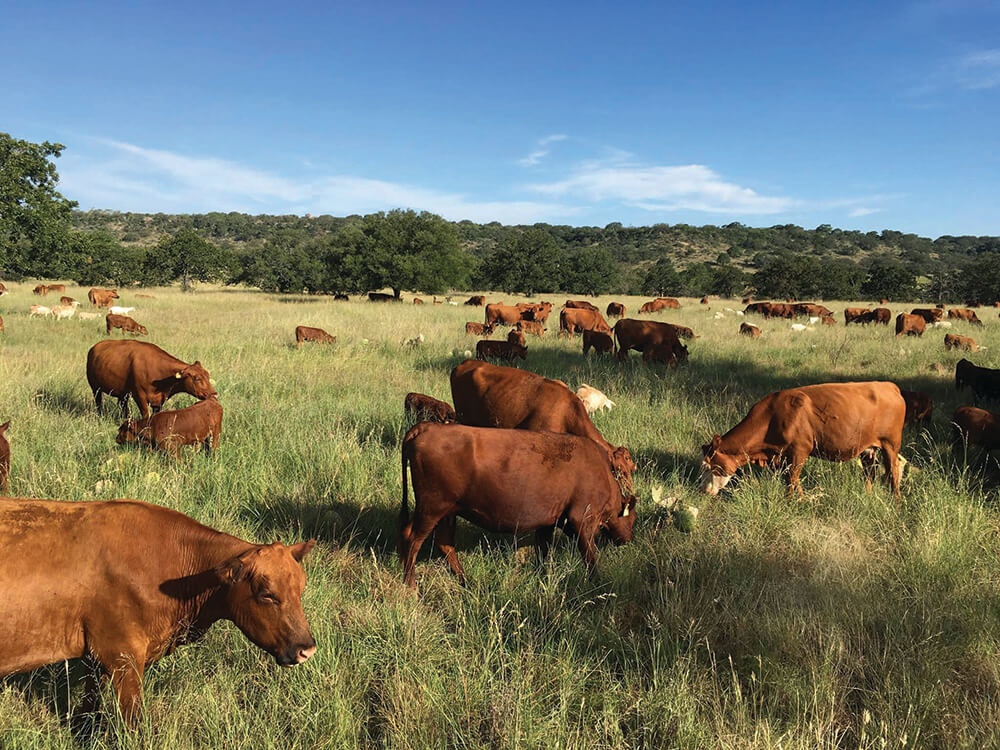
What is Holistic Management?
Regenerative ranching is often associated with holistic management, which is the decision-making framework that Allan Savory developed beginning in the 1960s.
In simplified terms, holistic management is a mindset that requires you to recognize that nature is made up of various interconnected parts and that a land manager’s personal and economic well-being is tied to the health of the land. Essentially, land managers make decisions that take into consideration the short- and long-term effects on ecology, profits and humans. Holistic management also emphasizes an understanding of ecosystem processes, such as the water and mineral cycles, energy flow, and community dynamics.
The framework asks producers to define their operation, including who is responsible for making decisions and what resources they have available. Then they must articulate their “holistic context,” which is essentially their goals and vision for what they want their life to look like as well as what they want for the land hundreds of years into the future. Practitioners run every decision through a series of checks to see if a particular action is aligned with their “context.” Then they continually monitor their ecology, profits and social factors, and adapt in ways that keep them moving toward their goal.
To learn more, go to savory.global or holisticmanagement.org.
When Malmberg came home to the ranch, it was as if he was seeing the land for the first time. He started noticing bare ground, plant diversity and overgrazing. For the first two years, he didn’t change anything. Instead, he spent a lot of time walking the land, looking at the ground and rolling up fences he didn’t think necessary anymore.
He also spent time setting a plan.
He, his four full-time employees, and, during the summer, his brother and three sisters were running 600 cows and 600 yearlings in about four pastures based on the age and sex of animal.
In a region that receives only about 8.5 inches of rainfall per year, that meant expansive pastures that took days to cross in order to check all of the cattle.
Based on what he learned about needing to use both grazing and rest on the land, he started planning his grazing to adapt to plant growth rates, residual cover and, most importantly, plant recovery periods. He wanted to prevent overgrazing and realized he could do this best by concentrating his cattle in smaller pastures and moving those cattle to fresh grass frequently. His first step was to develop more water systems to accommodate two large herds that would graze smaller sections of land at a time. In the third year, he started consolidating his cattle.
By that point, he and his crew were going around 6 miles of fence at a time instead of 100. His neighbors thought he was crazy and some even thought he was overgrazing (the opposite of what he was doing), but Malmberg started seeing results. More forage was growing, and, by the fifth year, desirable bunchgrass species were reappearing. He was able to increase stocking rates, and his animals weren’t getting sick
as often.
“That was pretty reinforcing to me that you could see what was going on,” Malmberg says. “You could see improvement. You could see animal health improving. That kept you going even though your peers were not very supportive and not a lot of people around were doing this.”
At the height of his operation in Wyoming, he was running 1,200 cow-calf pairs and 1,000 yearlings on about 60,000 acres with two-and-a-half full-time employees. He had gone from a rate of 5 stock days per acre to 10 while becoming an epicenter, often studied by University of Wyoming, for the endangered sage grouse. In the late 2000s, he and Andrea Malmberg, his wife, moved to northeastern Oregon and began using cattle to improve habitat for salmon. On the first of their two ranches there, they have been able to go from 130 stock days per acre to 250 due to improvements in soil health.
“With the sage grouse and the salmon, I’ve never seen a situation yet when cattle didn’t benefit from the improvement of the sage grouse or salmon habitat,” Malmberg says.
The hardest part for him, Malmberg says, was stepping away from traditional practices.
“It feels like you’re dishonoring your ancestors, and it acknowledges you were wrong,” he says. “I’ve learned to deal with that by recognizing that we didn’t know some of these things before. My grandfather and father and uncle didn’t have a way to think about how the grasslands evolved.”
He adds that it’s important to learn how the ecosystem processes work and to trust them, recognizing it will take time to turn them around. Ultimately, however, it takes an openness to know your situation and to make the changes that will get you to where you want to be.
“With new knowledge and new understanding and a changing context (personal situation, finances, knowledge, people skills, rainfall patterns, etc.), we also need to change,” he says. “You can’t just do the same thing every day, every week, every month, every year, and expect to get different results.”
Chad and Rhona Lemke
LOCATION: Northwest Texas Hill Country
CURRENT OPERATIONS: Raises beef cattle, sheep, goats and hogs on native range
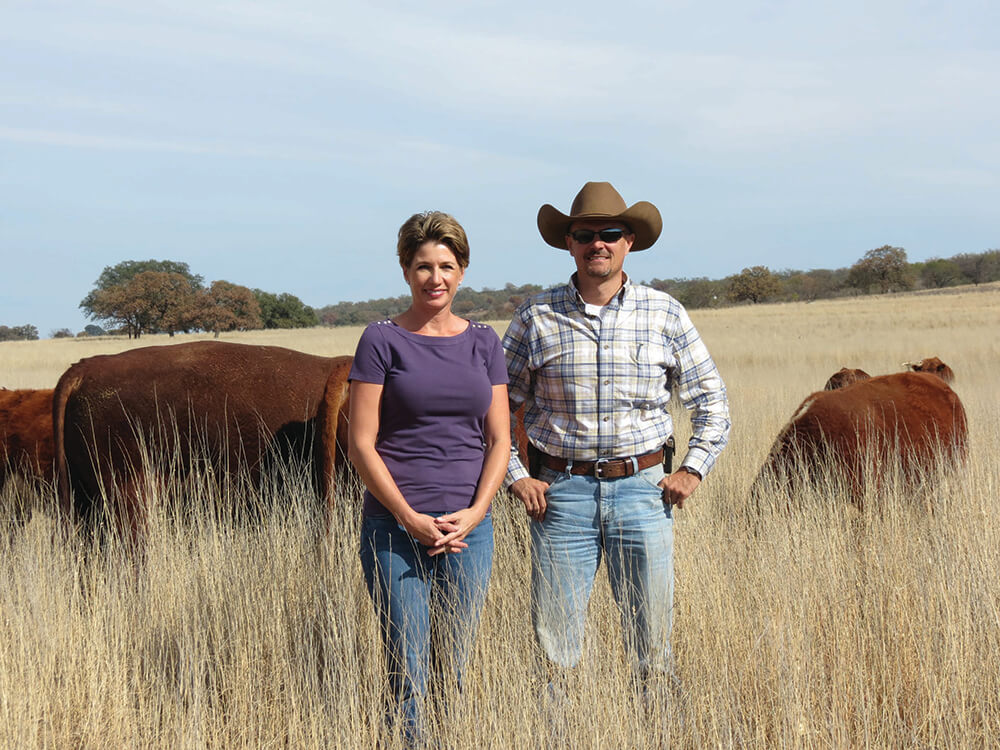
In the early 2000s, Chad and Rhona Lemke were living in San Antonio when they decided it was time to pack up their four young daughters and move to the family ranch in the northwest Texas Hill Country.
Though the couple met in the city, they held shared experiences of country life. Rhona’s father owned a ranch outside their small town south of San Antonio, where they spent their weekends. Chad had worked summers and holidays on his family’s ranch near Mason, Texas, where his grandparents and great-grandparents lived.
They wanted to raise their family in the country, but they noticed many of their country friends were moving to the city. When they asked why, they were told you couldn’t make a living ranching anymore.
It was an odd thought to the Lemkes, who questioned how an ancient lifestyle could be made nonviable in the past 50 years. They decided that if the conventional methods they had grown up with weren’t profitable anymore, they would just have to find a different way.
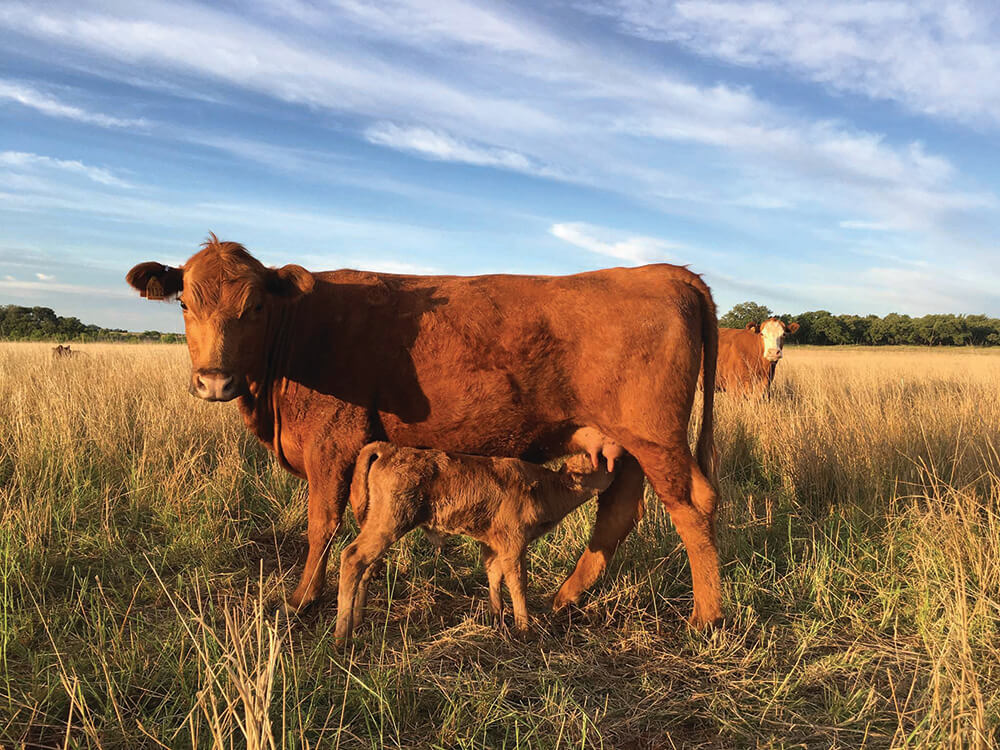
When they were given the opportunity to take over management of the family ranch in Mason, some of which has been in the family since 1895, they dug into their record books and found an unfortunate story.
“Our family managed well, given what they had, but we know through data that was shared throughout multiple generations that all of the natural systems were going downhill,” Chad says.
Though the family rotated their cattle through four or five pastures, those pastures were large and overgrazed. In an environment where you may get 40 inches of rain one year and 15 in the next, running out of grass became a real problem with no plan. When it was gone, supplemental hay was fed to the cows.
As the Lemkes sorted through numbers and looked out on the land, they could see it was supporting fewer animals and more invasive species. They started looking into ways to reverse this degradation.
“We knew we wanted to work with nature, not against it,” says Chad, adding that they wanted to foster the microbiology in the soil in part by cutting back on chemicals being used to control plant species considered weeds. “We wanted to manage for what we wanted, not against what we didn’t want.”
Chad, who had helped build a landscaping business in San Antonio, was familiar with biological products and methods for growing grass to cut. The Lemkes decided they would apply some of these same approaches on a much larger scale on the ranch.
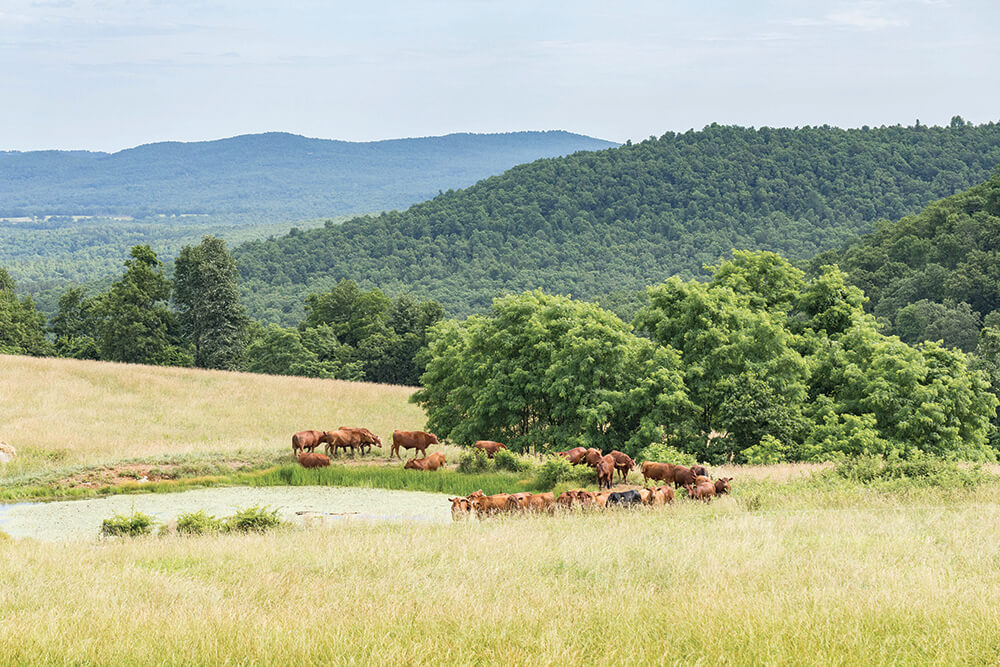
What is Regenerative Agriculture?
Regenerative agriculture is the process of restoring degraded soils using practices based on ecological principles. Noble Research Institute’s focus is on restoring degrading grazing lands, or regenerative ranching.
In general, regenerative agriculture and ranching promotes:
- Building soil organic matter and biodiversity.
- Healthier and more productive soil that is drought- and flood-resilient.
- Decreased use of chemical inputs and subsequent pollution.
- Cleaner air and water.
- Enhanced wildlife habitat.
- Capturing carbon in the soil to combat climate variability.
To learn more, go to www.noble.org/direction-over-perfection
Though both Chad and Rhona knew the basics of ranching from their early years, they are quick to say they were not ranch kids and had a lot to learn in those first few years. Much of what they needed to figure out was what exactly they needed to learn and who they wanted to learn from.
“That was a huge challenge,” Rhona says. “There is so much information out there that you can just drown in information and still not know where to go.”
Ten people may say 10 different things, she adds. However, once they figured out their goals, they were able to narrow that advice down further to what might work for them and, as Chad says, they were not afraid to try anything.
They recognized early on that they would need mentorship, which they found first through a holistic management course and later through networks of other producers following the same framework. Today, after more than 20 years of experimentation rooted in regularly moving animals to fresh ground in order to build up the soil, the Lemkes feel they are in a place where they can help others. They, with another couple, lead the Grassfed Sustainability Group, which is a network of Texas producers affiliated with the Savory Institute.
They have been able to triple their forage production and stocking rate, increase biodiversity, improve their soil’s water-holding capacity, decrease erosion, increase wildlife, and reduce invasive species. Now their goal is tohelp others get there without makin all of the same mistakes they did, Rhona says.
There are others out there who have been on the regenerative journey for decades and are willing to share their experiences, according to Chad. There has only been one problem.
“One of the beauties of agriculture is we’re fiercely independent people,” he says, pausing a moment. “And one of the drawbacks is we’re fiercely independent people.”
At times it has been difficult to find others on the path, but this is changing. Networks are popping up, and the internet and social media have made that even easier. Now farmers and ranchers just have to be willing to reach out for help.
It’s important to find people who are actually doing regenerative agriculture and to remember that what works in one area may not work in another.
“Every environment, every ecosystem, functions differently,” Chad says, “but principles hold true. So once you learn those principles and begin to implement, understand and see them in your own operation, that will help you do better long-term.”
Cody Hopkins
LOCATION: Ozark Mountains of north-central Arkansas
CURRENT OPERATIONS: Raises beef cattle, chickens and turkeys on introduced pasture managed for biodiversity and pigs in the forest
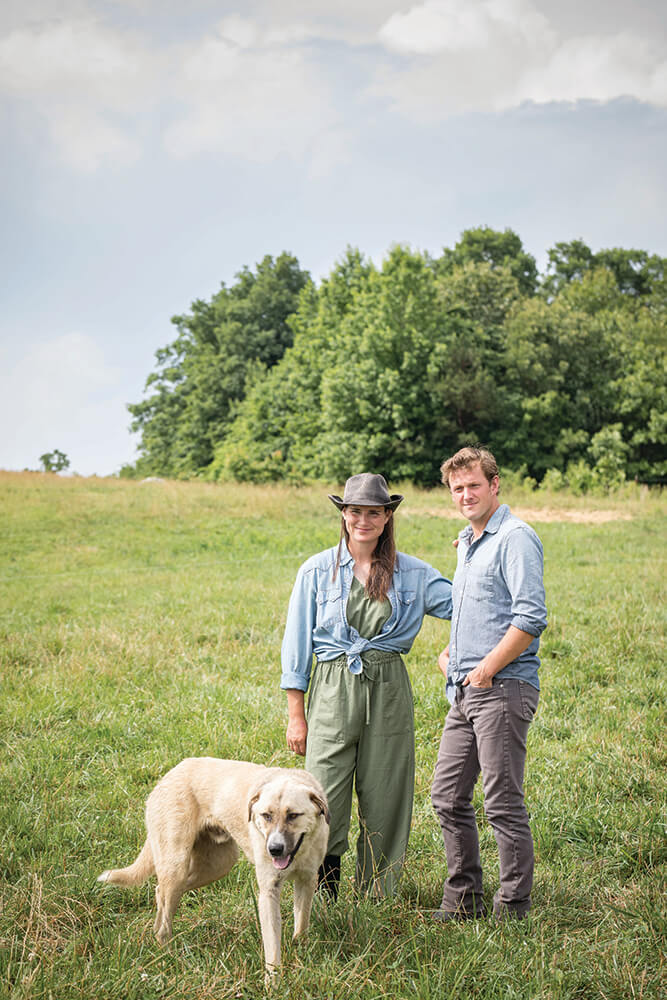
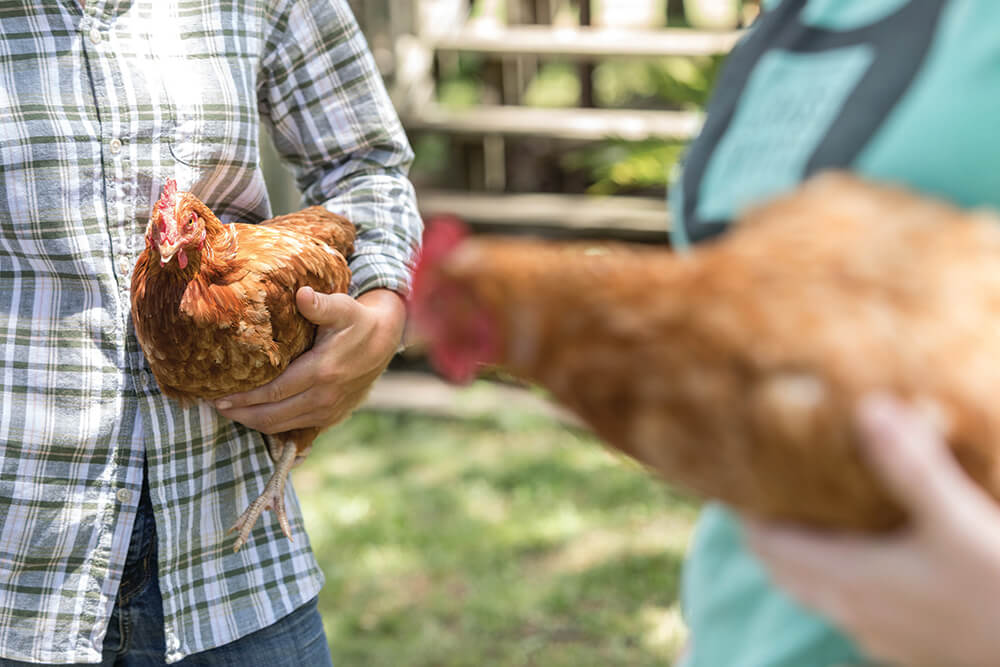
Cody Hopkins grew up on 40 acres in rural western Arkansas, but he wouldn’t call it a working farm. He also wouldn’t call the region brimming with economic opportunities.
Hopkins got out of town and, in 2001, became the first in his immediate family to graduate college. The physics major headed to the East Coast to teach, but after a couple years he was ready to be closer to home.
He wasn’t sure what he would do for work, a problem he realized wasn’t unique to him in his home community. He did know he liked food, and he was concerned about environmental problems connected to poor agricultural practices.
In 2006, he and Andrea Todt, his wife, decided they wanted to start a farm that would reflect their values around healthy living, proper stewardship of the environment, respecting animals and creating economic opportunities in their community.
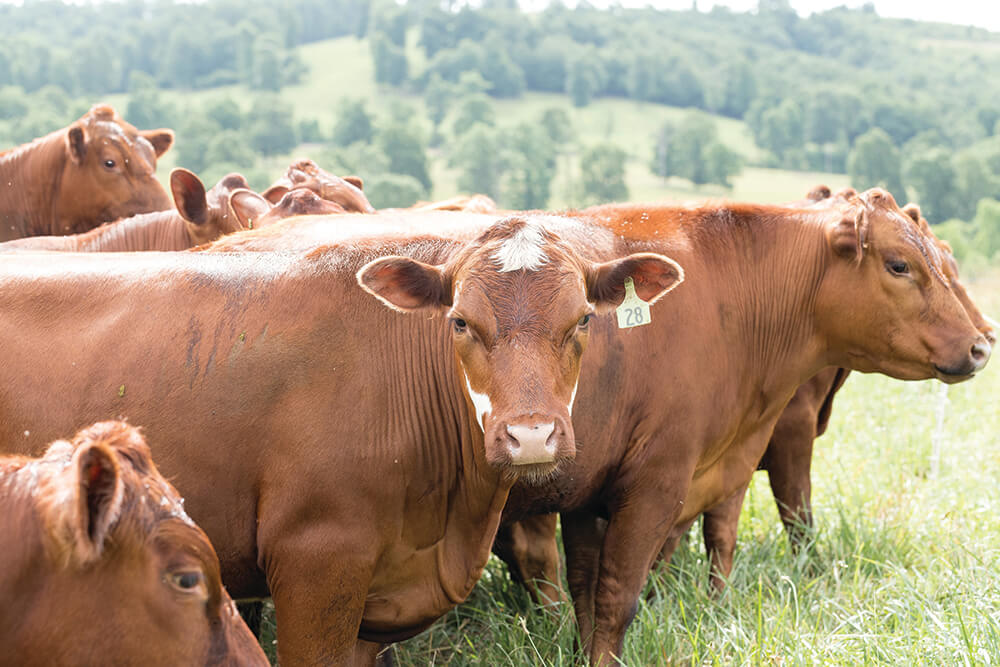
They had no land or experience to draw from, only big dreams and a realization they were going to need help.
From the beginning, they knew they wanted to market directly to consumers. There was too much uncertainty in the commodity market, especially for an operation of their size. An elderly neighbor was allowing them to use her 40 acres in exchange for the free fertilization their animals would provide.
On 40 acres, they knew they would need more than just cattle to make ends meet. They had seen other farmers using chickens in complement with cattle to improve soil health and decided that would pencil out for them.
But even before they purchased any animals, they started their research. First by reaching out to other producers then by joining different small groups. They attended conferences, read lots of books then learned hands-on through experimentation on their farm.
A 1% increase in soil organic matter can hold about 20,000 gallons of additional water per acre. Land that is able to capture and retain more rainfall is more resilient during times of drought and flood.
Land that is able to capture and retain more rainfall is more resilient during times of drought and flood.
“We knew we had a lot to learn and we were just aggressive in going out and doing that,” Hopkins says, adding that their ability to throw themselves all-in and to live simply while building their business gave them an advantage over someone trying to make the switch mid-career.
Their greatest challenge was lack of infrastructure. Though restaurants and families in the Little Rock area were hungry for meat from the pasture-based livestock they were raising, they had difficulty finding processors that were inspected by the U.S. Department of Agriculture, a requirement for all meat sold commercially in the U.S. Once the meat was harvested, they also needed to find enough freezer space to store it safely. And then there were questions like, “What if customers only want tenderloin and I can’t get the ground beef sold?” and “What if no one wants to buy the bones or the oxtails?”
At first, they did all of their own marketing, processed chickens on-farm, managed their relationship with the processor directly, and managed their own inventory, with help from a growing team of employees from the community.
“There was a pretty serious learning curve of trying to be a vertically integrated business on a small scale,” Hopkins says. “You’re not just a farmer, you’re a marketer, an inventory manager, a human resources director and an accountant.”
Still, they were growing and seeing improvements on the land. Within three years, they had grown beyond the 40 acres and moved on to bigger pastures. Today, they manage about 350 acres, continually refining their practices.

The Four Ecosystem Processes
Water Cycle: The amount of water on Earth is finite, and it cycles through evaporation, transpiration and precipitation. One of the ways that water moves through the cycle is through its ability to permeate the soil.
Nutrient Cycle: In this system, energy and water are transferred between living organisms and the non-living parts of the environment. Frequent disturbances, such as grazing, help to maintain the above ground nutrient cycle. Biotic activity such as earthworms, insects and microbes in the soil, further improve the nutrient cycle. An optimal nutrient cycle depends upon good plant diversity and soil cover.
Energy Cycle: It all begins with the sun. Plant leaves are the solar panels that drive the energy cycle.The energy cycle functions optimally when plants are allowed adequate recovery from grazing.
Community Dynamics: Community dynamics are the changes to community structure and composition over time, including changes in microbiology, plant and animal life.
Cattle are moved to fresh pasture every day, typically twice in the growing season. The chickens and turkeys pass over a different piece of ground each day, making one full rotation each year. And the pigs, which forage primarily in the forest, are rotated every five to 14 days, depending on size.
One piece of pasture may rest for two to four months, depending on time of year, which, combined with the “dance” of moving animals, increases fertility and allows roots and forage a chance to regrow. Annual grasses are also interseeded behind the chickens and pigs to add even more biodiversity and nutrition for the cattle. They have seen pastures that started out with 1.5% organic matter shoot to 3.5-4%.
“That’s been a huge win for us,” Hopkins says. “Our pastures stay greener longer into the winter and into drought. They’re more productive. They have more diversity. I think that’s a testament to the overall way we farm. There’s not one silver bullet. It’s the rotation of the animals and the mix of the animals. If we were just doing cattle, it would be difficult to do what we’re trying to do here in the Ozarks.”
The economics of farming and rural life remains a challenge. Hopkins is continually evaluating. In 2014, he and Todt started Grass Roots Farmers’ Cooperative with a small group of like-minded farmers and in partnership with Heifer International, an Arkansas-based nonprofit that helps smallholder farmers across the world. One of their goals was to help bring more economic stability to their farm and to others like them. Grass Roots does so in part by helping to reduce complexity in the business, which Hopkins describes as a hindrance to both efficiency and quality of life. In 2020, the cooperative bought from nearly 40 farms and ranches from Arkansas,
Missouri, Kansas, Texas, Kentucky, North Carolina, Nevada and Oregon.
Now Todt focuses on managing the day-to-day farm production while the cooperative, run by Hopkins and a staff of 12 others, handles the logistics that go into getting meat from farm to consumer, from processing to marketing and delivery. The cooperative also provides on-farm support to help producers improve their practices, grow their operations, and coordinate other logistics to ensure production meets demand and that they have everything they need to do so.
“We were basically building a business from scratch (when we started our farm),” Hopkins says. “You’ve got to learn how to run that business and you’ve got to be willing to figure out how to make ends meet while you’re trying to figure out how to get the business off the ground where it can contribute to your livelihood. That is one thing we try to focus on now. We want to help accelerate that for folks who join our coop.”
Breaking Barriers
Noble Research Institute recognizes the task at hand is not easy and aims to remove, mitigate or help ranchers avoid the barriers that deter them from adopting long-term regenerative, profitable land management practices in grazing animal production.
Noble aims to help grazing animal producers overcome the following barriers to regenerative ranching:
- Lack of guides and mentors.
- Economic uncertainty in adoption and operations as well as ongoing risk.
- Cultural/societal influences.
- Lack of available, science-based management knowledge.
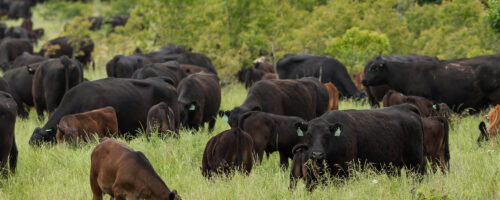

Comment